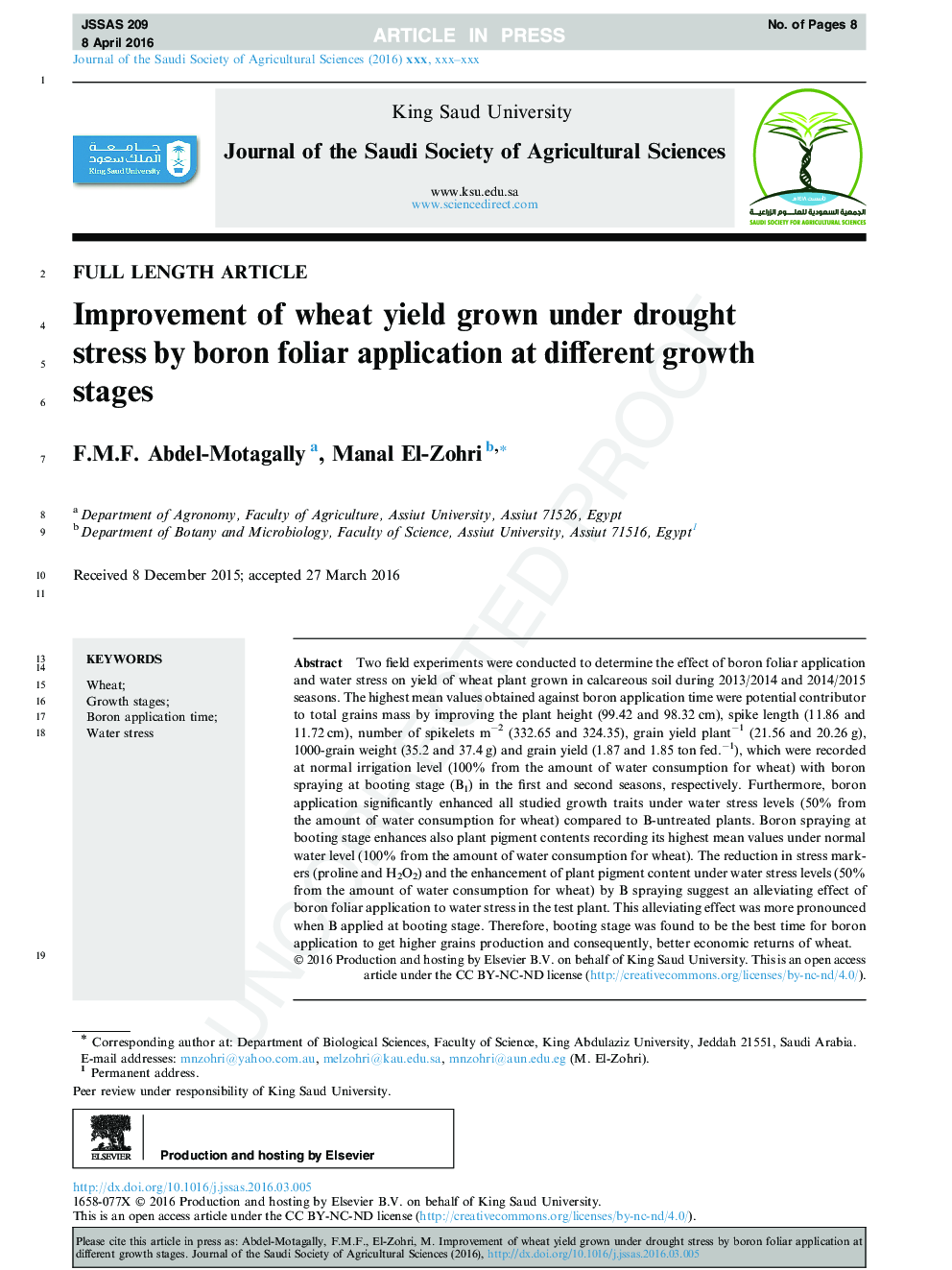| Article ID | Journal | Published Year | Pages | File Type |
|---|---|---|---|---|
| 8876335 | Journal of the Saudi Society of Agricultural Sciences | 2018 | 8 Pages |
Abstract
Two field experiments were conducted to determine the effect of boron foliar application and water stress on yield of wheat plant grown in calcareous soil during 2013/2014 and 2014/2015 seasons. The highest mean values obtained against boron application time were potential contributor to total grains mass by improving the plant height (99.42 and 98.32 cm), spike length (11.86 and 11.72 cm), number of spikelets mâ2 (332.65 and 324.35), grain yield plantâ1 (21.56 and 20.26 g), 1000-grain weight (35.2 and 37.4 g) and grain yield (1.87 and 1.85 ton fed.â1), which were recorded at normal irrigation level (100% from the amount of water consumption for wheat) with boron spraying at booting stage (B1) in the first and second seasons, respectively. Furthermore, boron application significantly enhanced all studied growth traits under water stress levels (50% from the amount of water consumption for wheat) compared to B-untreated plants. Boron spraying at booting stage enhances also plant pigments contents recording its highest mean values under normal water level (100% from the amount of water consumption for wheat). The reduction in stress markers (proline and H2O2) and the enhancement of plant pigments content under water stress levels (50% from the amount of water consumption for wheat) by B spraying suggests an alleviating effect of boron foliar application to water stress in the test plant. This alleviating effect was more pronounced when B applied at booting stage. Therefore, booting stage was found to be the best time for boron application to get higher grains production and consequently, better economic returns of wheat.
Related Topics
Life Sciences
Agricultural and Biological Sciences
Agricultural and Biological Sciences (General)
Authors
F.M.F. Abdel-Motagally, Manal El-Zohri,
